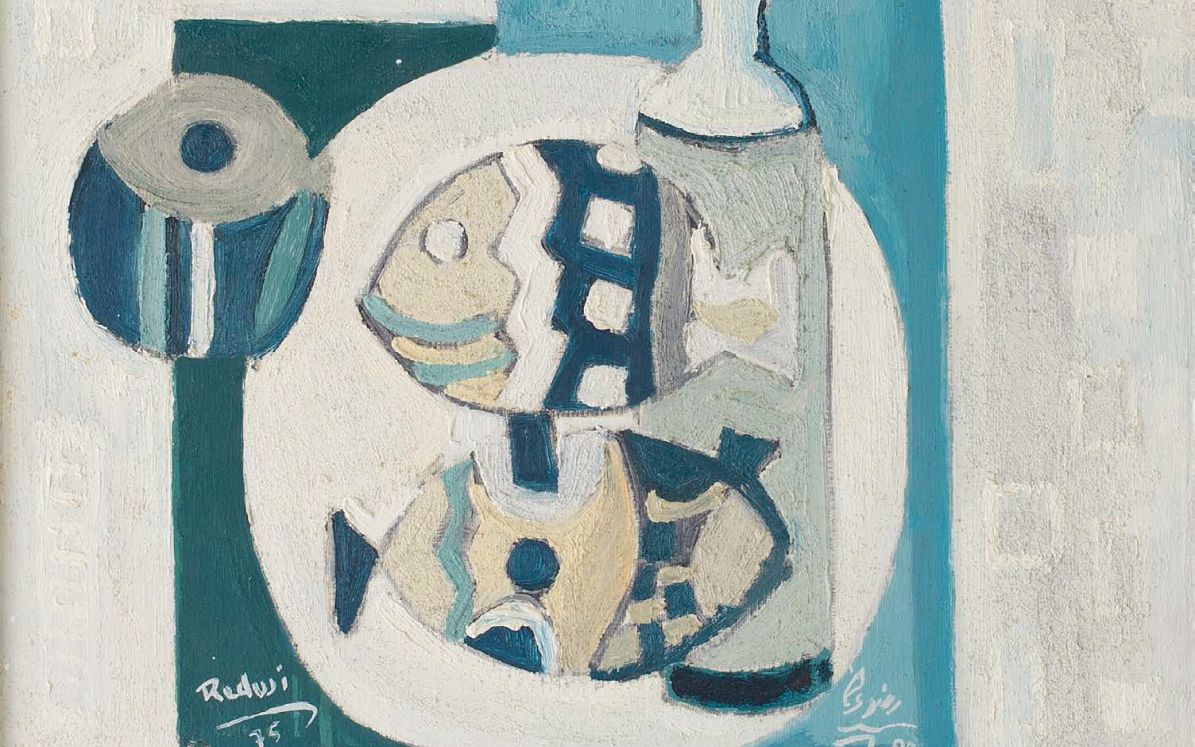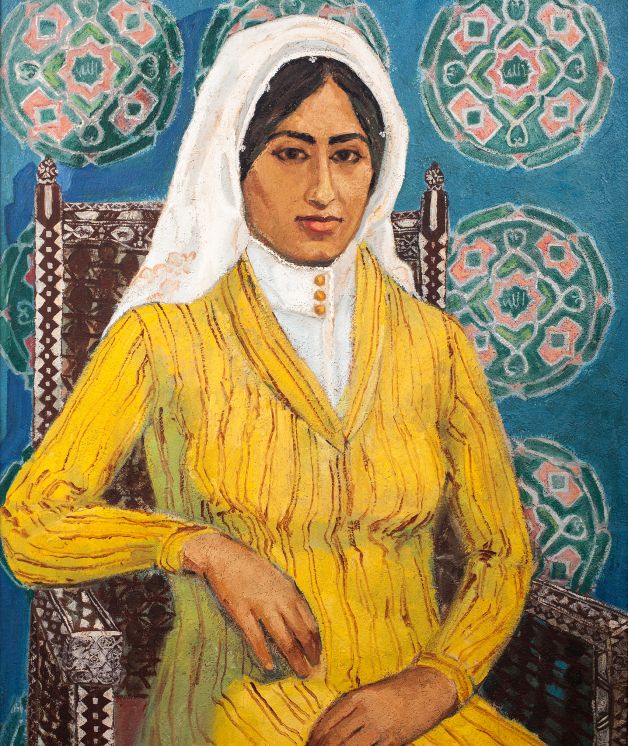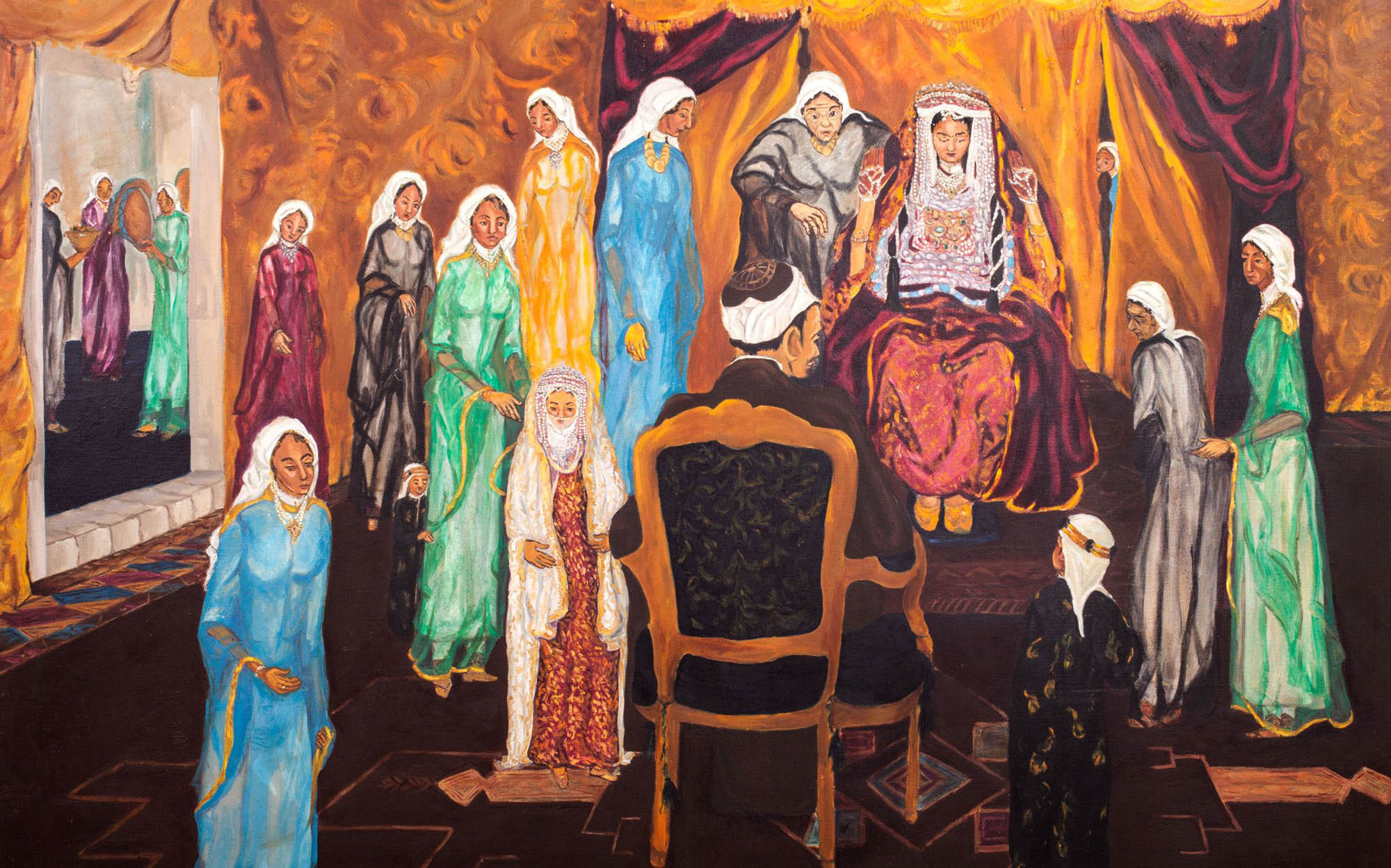Later in life, the Nobel Prize for Literature winner Naguib Mahfouz still remembered his favorite read from when he was 10—a detective novel by Hafiz Najib. Although Arabic comics have long been considered “just for kids,” they have recently seen a renaissance. There are not only a host of contemporary comics collections, but also projects that look at the history of comics, such as the Mu’taz and Rada Sawwaf Arabic Comics Initiative at the American University in Beirut and the traveling Arabic Comics Exhibit, co-curated by siblings Nadim and Mona Damluji.
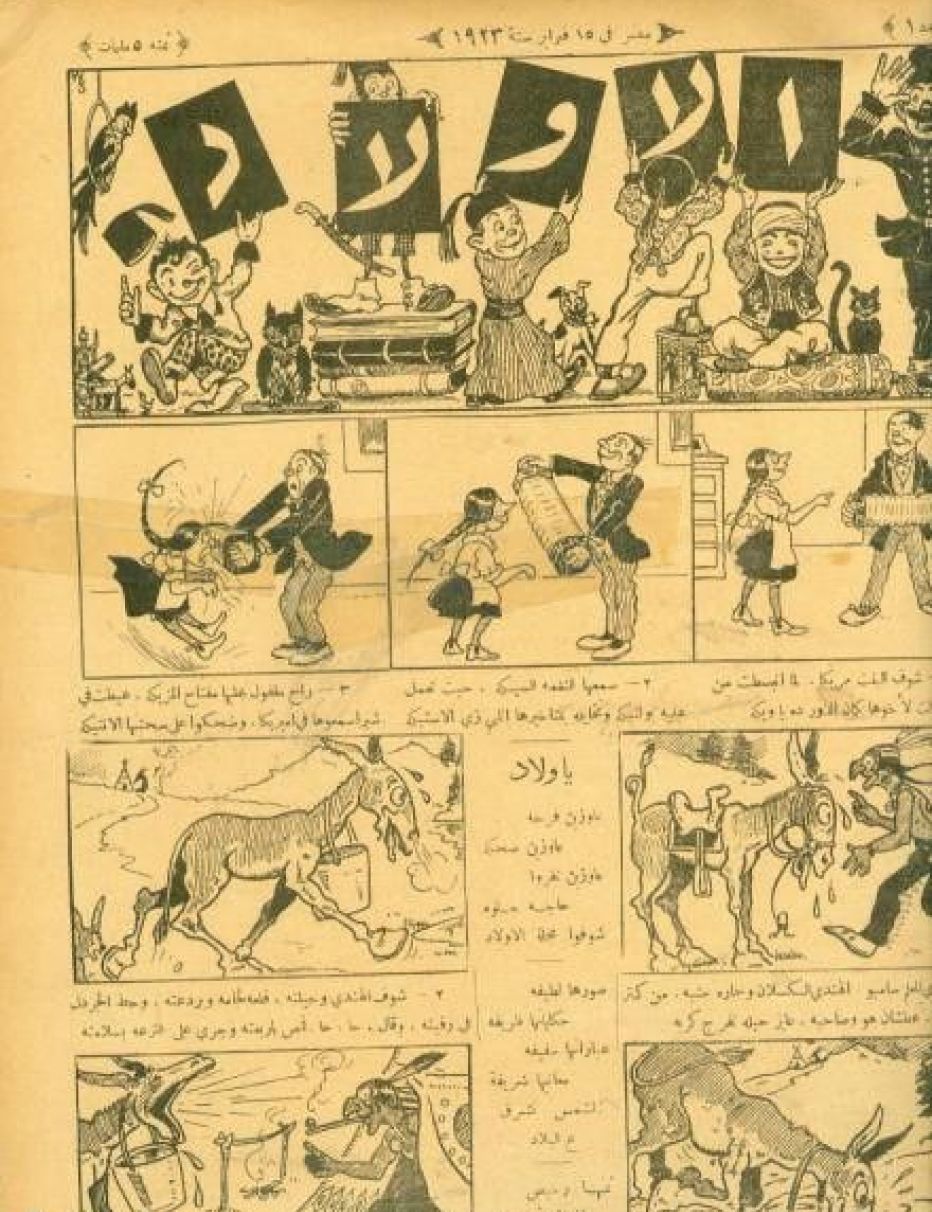
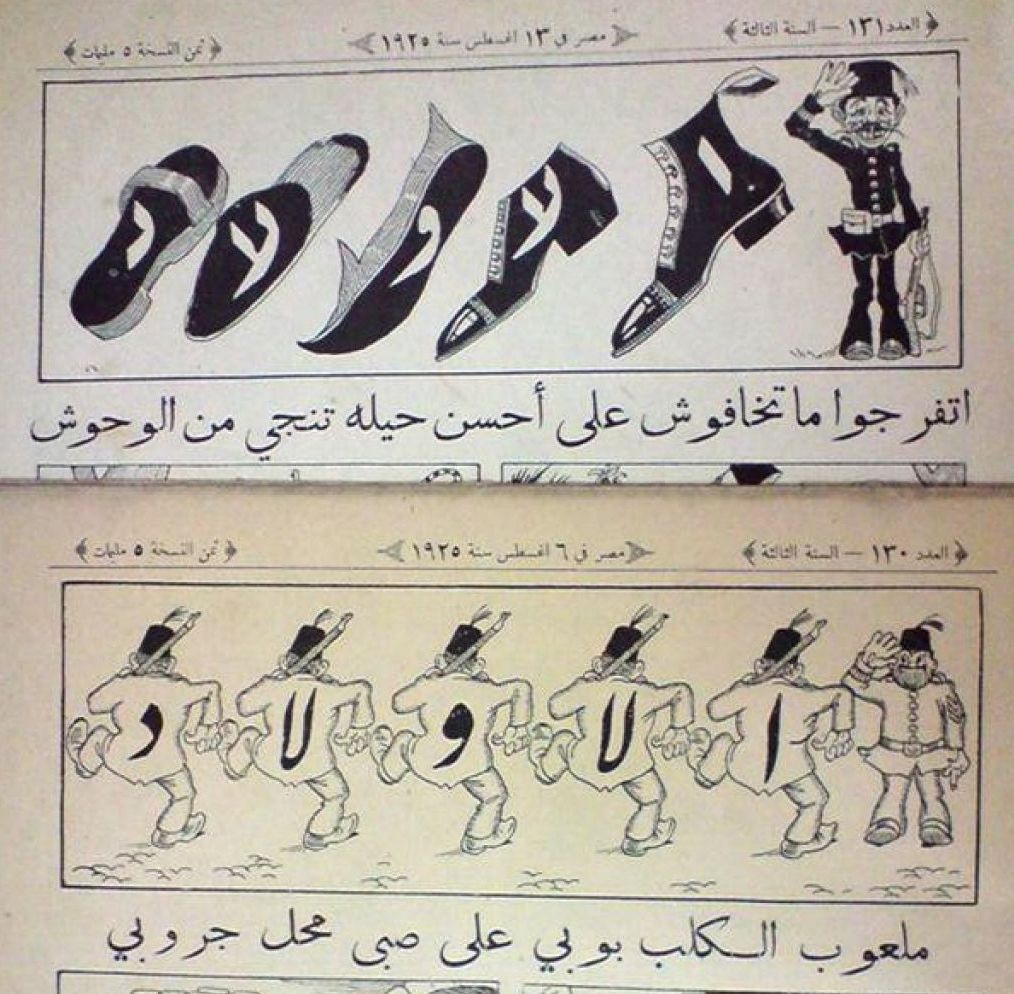
Al Awlad (The Boys) seems to have been the first long-running, original Arabic comic. The first issue appeared in Egypt in 1923, when few countries were producing serial comics. Al Awlad started up six years before Hergé began to publish his iconic Tintin in 1929, and the issues ran until 1932.
Each was eight pages long, in black and white, and featured stories of mischievous children unfolding in light, fun, rhyming prose. The 1920s and 1930s also saw adaptations of Mickey Mouse comics in magazines like Al Atfal (The Children), which was launched in 1926.
The 1940s was a golden age of comics worldwide. In this decade, Arab artists created original characters, but they also adapted many international comic figures for local audiences. The magazine Katkot (baby chick), which launched in 1946, translated the adventures of Tintin. In them, Tintin became “Hammam” and he might, for instance, wear a tarboosh instead of a cowboy hat. Other magazines, such as Bolbol (1946), Baba Sharo (1948), and The Future (1948) adapted other popular figures and styles.
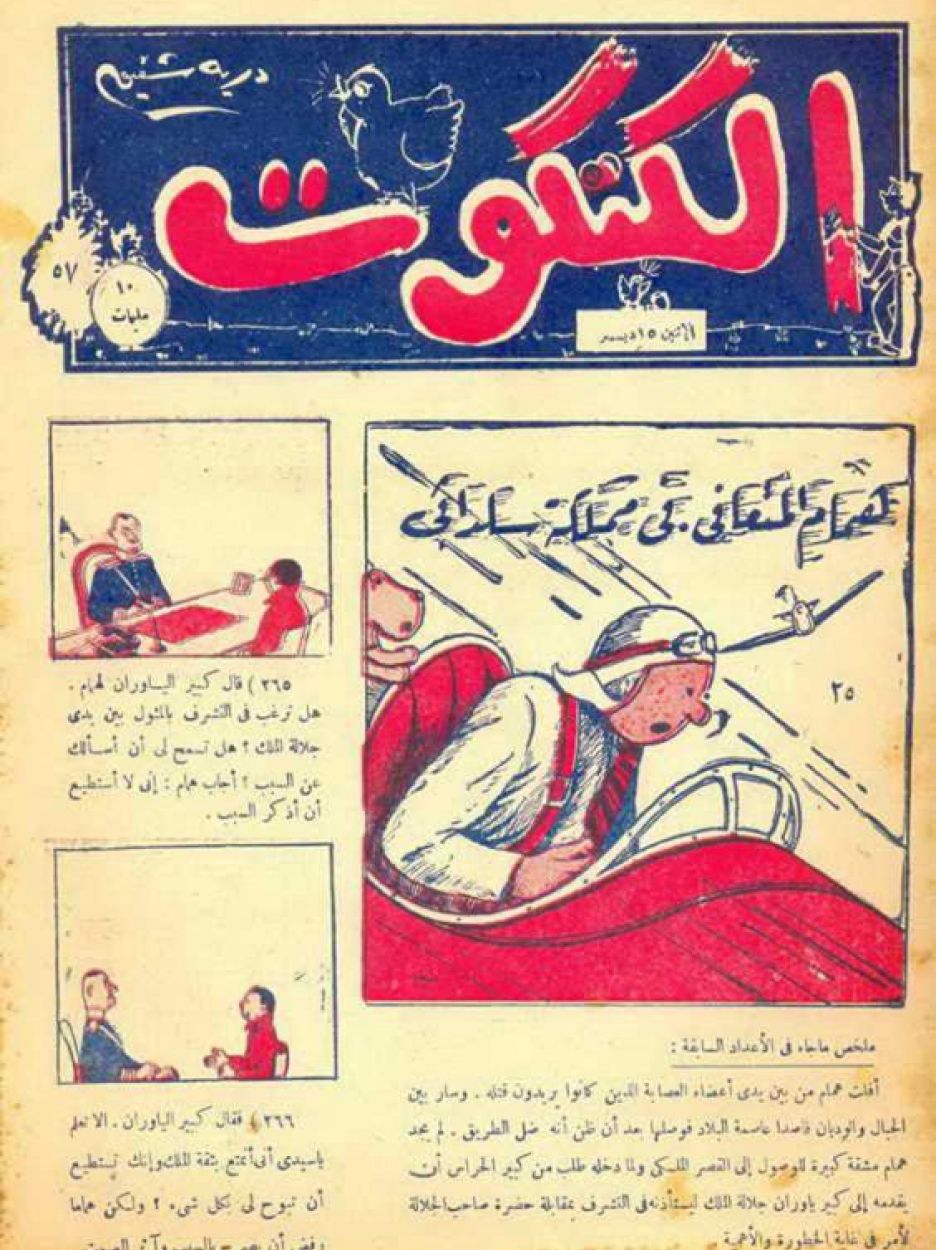
The 1950s saw the rise of Egyptian comics powerhouses such as Sindibad and Samir. When Sindibad launched in 1952, it had some local stories, but it also incorporated stories about “Farfour and Basbous,” clearly modeled on Tom & Jerry. Samir took comics art further: they boasted a variety of innovative styles and made use of colloquial language. In Samir, local Juha stories
-the “wise fool” of Arabic folklore
-shared space with adapted Tintin.
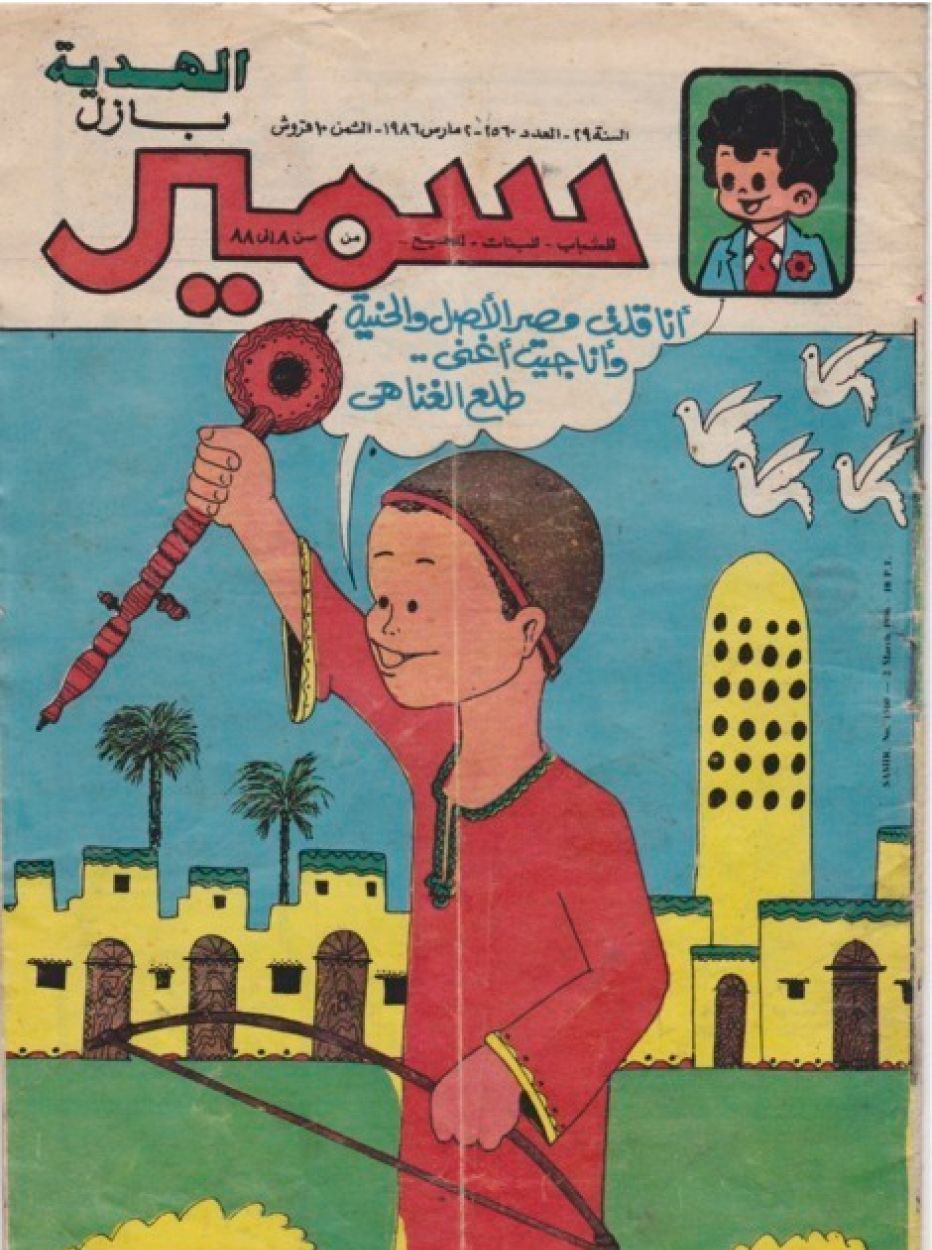

Despite the start of Lebanon’s civil war, the 1960s and ‘70s saw an explosion in Lebanese comics. There were not only iconic and tremendously popular Mickey and Superman adaptations (where Clark Kent became Nabil Fawzi), but also the local productions of Bissat al-Reeh (Flying Carpet). According to Lebanese scholar George Khoury, the 1960s saw more than 35 comic magazines appear in Lebanon. In the late 1960s and ‘70s, a few other countries started up staterun comic magazines, including Usama in Syria and Majallaty in Iraq.
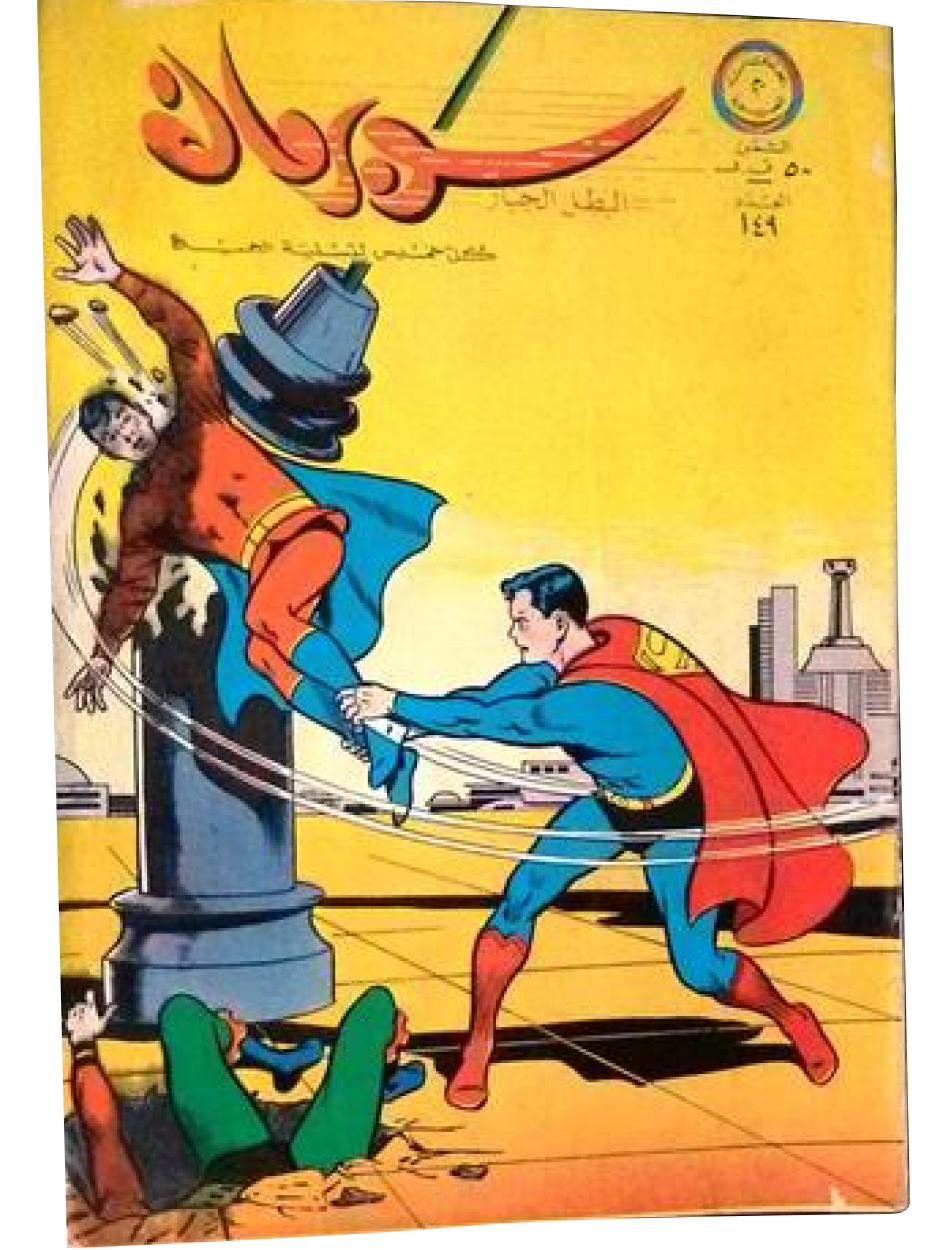

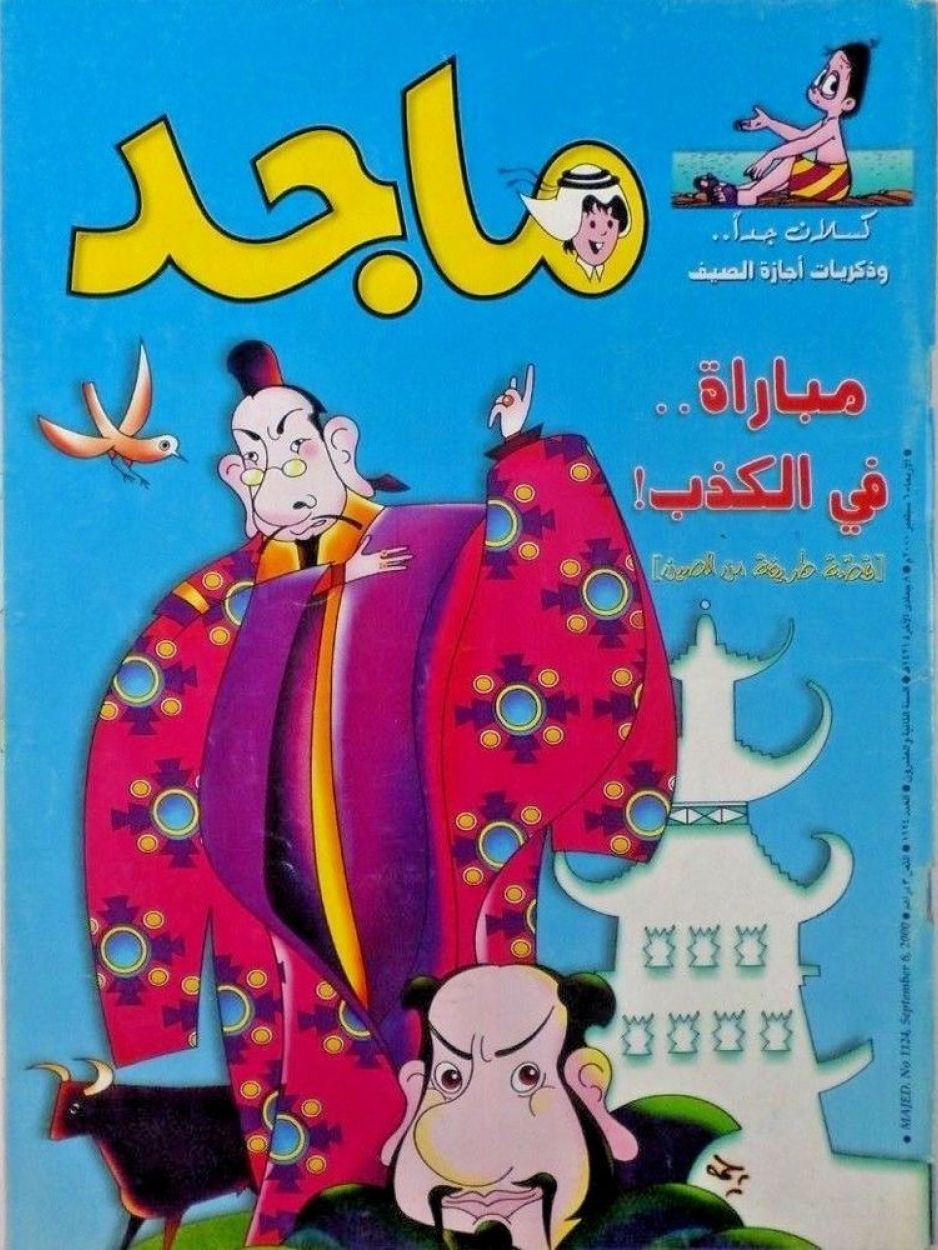
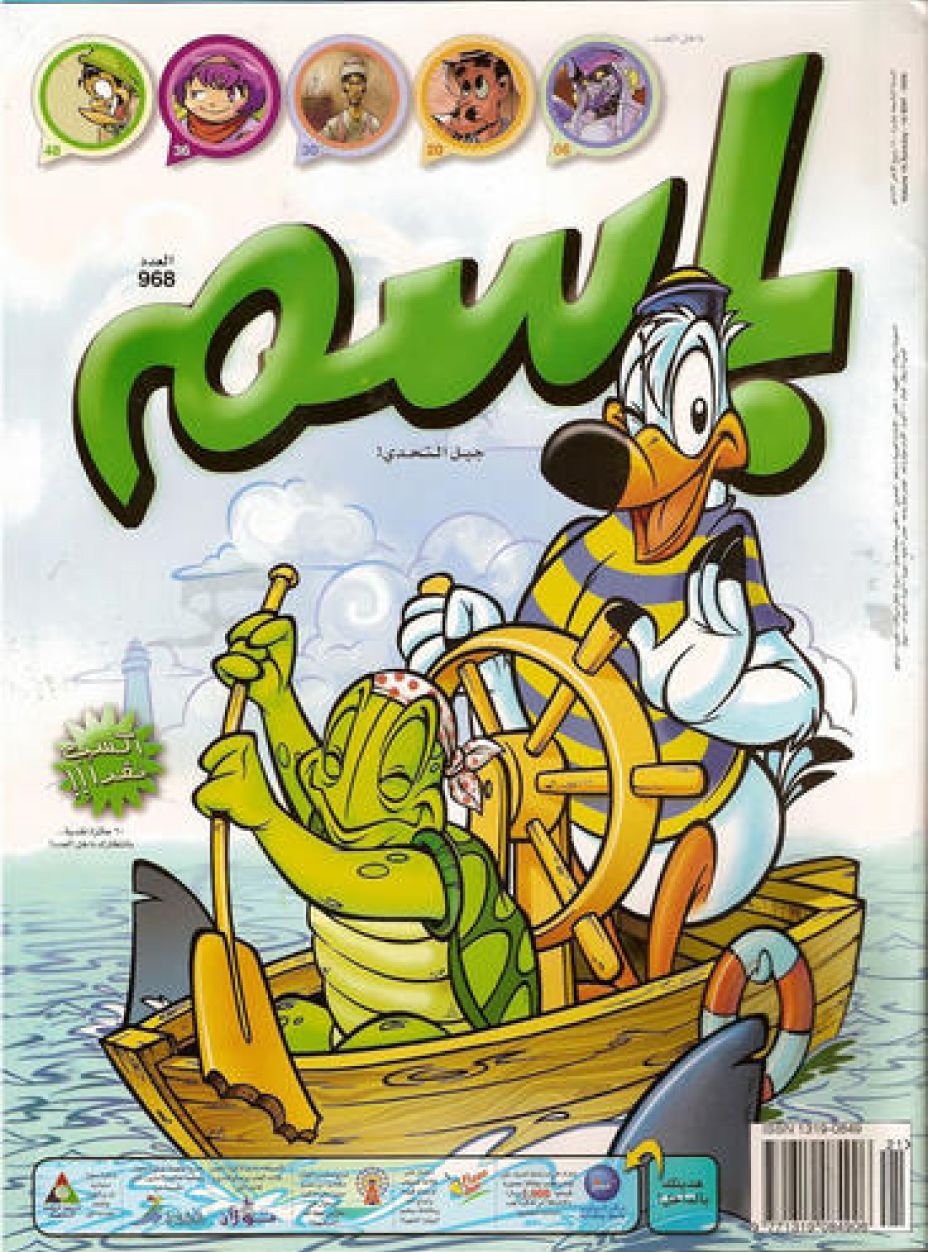
The 1980s saw a wide variety of comics for children, including Bassem in Saudi Arabia, Open Sesame in Kuwait, and the popular Majed produced out of the UAE—which was recently spun-off into a TV show.
One of Majed’s recurring characters is a boy named Majed, while another is “Kaslan Jiddan” (Very Lazy). Launched in 1979, Majed has sold millions of copies and remains popular today.
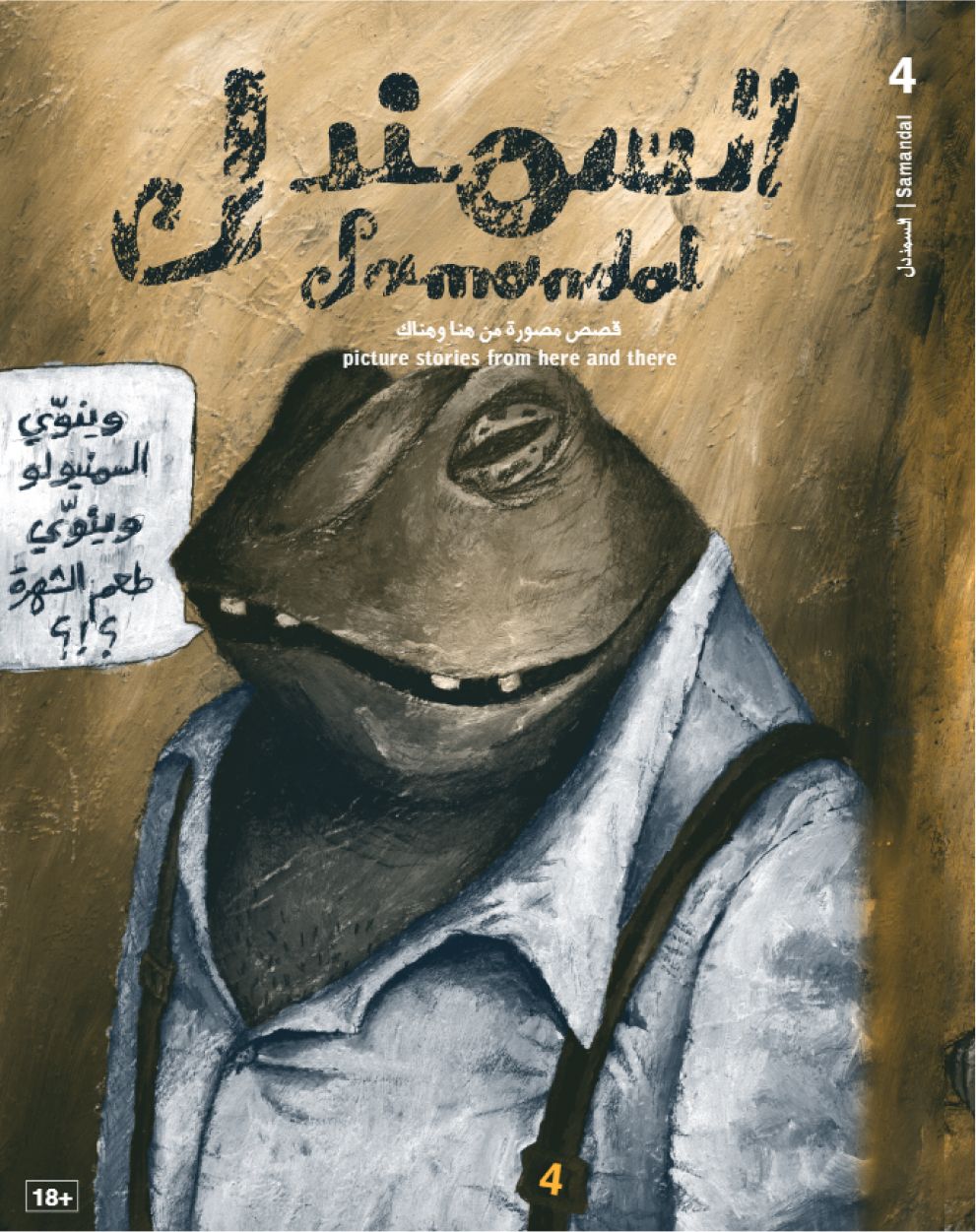

Starting in the 1990s, many young and talented Arab comic artists moved away from comics for children. This movement started in the mid to late 1980s, with groups such as the JAD Workshop in Beirut and, in Algiers, with the first Festival de Bande Desinée in 1986. After a relatively quiet period in the 1990s, the
M. Lynx Qualey is the editor-in-chief of the ArabLit cooperative and founder of ArabLit.org, a website that brings together translators, authors, publishers, critics, academics and readers around discussions of Arabic literature in translation.
